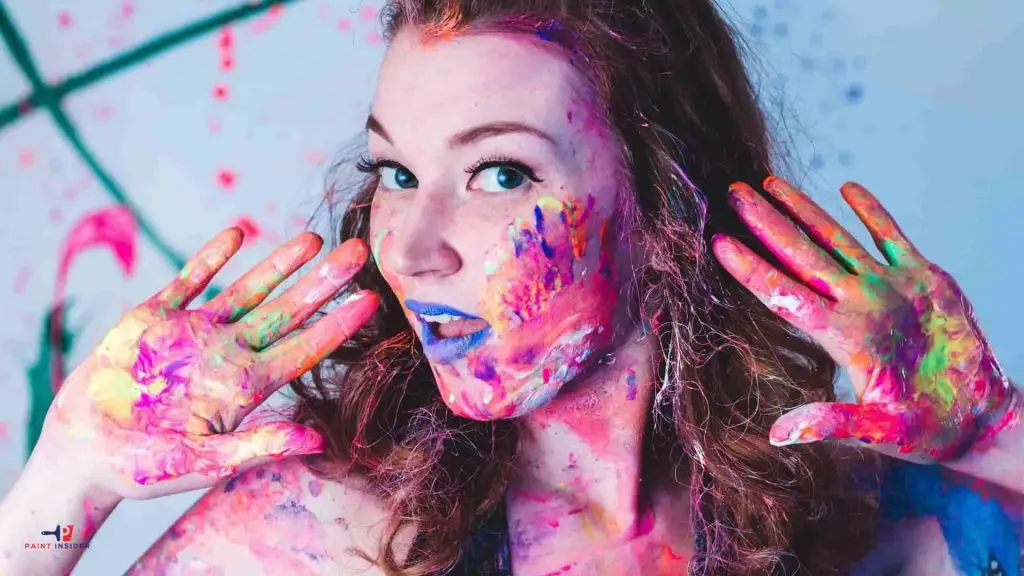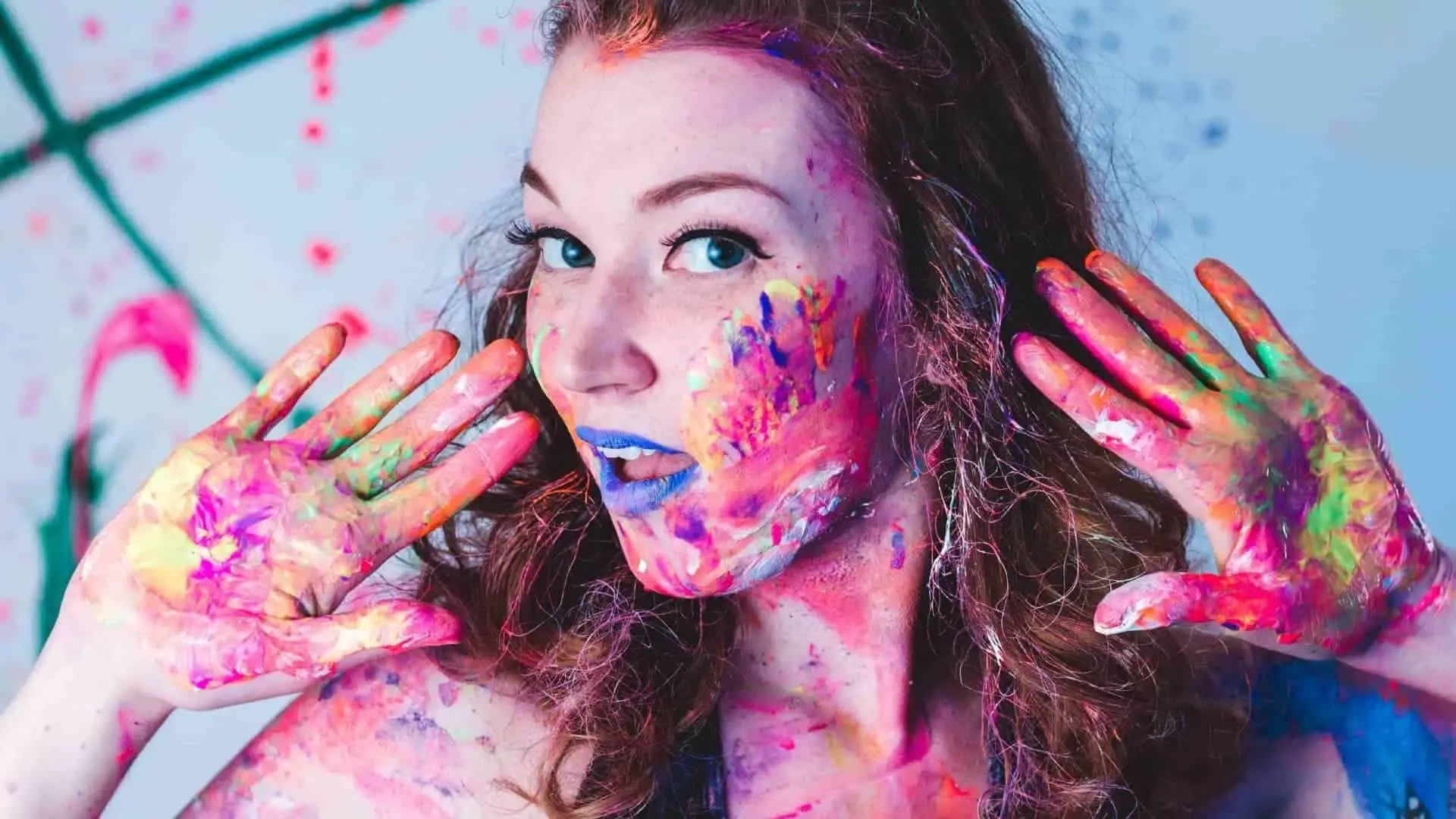In the world of artistic expression, the human body is often used as a canvas for creative endeavors. From festivals to photo shoots, body painting has gained popularity as a unique form of artistry and self-expression. However, amid the vibrant colors and intricate designs lies a crucial question: what paint is safe for the skin? As artists and enthusiasts seek to adorn themselves with stunning visuals, it becomes paramount to understand the implications of using different types of paints on their bodies. This comprehensive guide aims to unravel the complexities surrounding skin-safe paints, empowering you to make informed choices and create fearlessly on your beautiful canvas – your skin. According to experts, the list of safe paint for skin are :
- Water-Based Paint
- Metallic Body Paint
- Alcohol-Based Paint
- Latex Body Paint
- Acrylic Paint
- Henna
- Commercial Body Paint
- Markers
We also allow our children to enjoy their childhood with arts and crafts. From fun body painting cosplay to artistic body paint, photoshoots, events, and festivals painting on the skin has become more and more popular. Painting is not only the easiest but also the cheapest means. But the question is, what paint is safe for the skin?

Here safe paint refers to the paint that is toxic-free, allergy-free, and can be removed from the skin. It also depends on the age, and the application though some experts have different opinions.
List of Top 8 Skin-safe Body Paints
We talk about some types of Skin painting and other factors. Let’s see some most used paints and their pros and cons.
Water-Based Paint
Mostly we paint our face and body. Skin safety should be considered before choosing paint for skin painting. Only skin paint or skin-friendly paint must be used for body painting. It is strongly advised to use water-based paints which can be washed away easily.
Water-based paints must be well-controlled and have a set of guidelines that they need to follow. It will be non-toxic and can be easily washed away after use. We can use different types of equipment like airbrushes, sponges, or paintbrushes to apply this paint.
Water-based paints are considered to be the best for the skin but it is not best for a professional body paint set up for a modeling event.
Metallic Body Paint
Metallic body paints contain real metal powder which is mixed with a special liquid to create the “statue” effect. Often we see people performing on roads or circus that look like ‘Silver Statue’ or golden color. This type of paint is irritating to the skin due to metallic powder. So, we should be more careful regarding Metallic body paint. It is not easily washed away like water-based paint. Without performance, it is wise to avoid using metallic body paint.
Alcohol-Based Paint
Alcohol-based body paints are liquid or solid face paints that are used to last for certain hours only. It resists both sweat and water. It is also rub-proof. A brush and a sponge or an airbrush are needed to apply Liquid alcohol-based face paints. These types of paints are mostly used for making airbrush tattoos. To remove Alcohol-based paint, you might use some rubbing alcohol. These types of paints are toxic. So, at the time of applying or removing this paint, make sure you are in a well-ventilated place.
Latex Body Paint
Latex paint is mainly made of latex with other elements. This paint is popular as it dries quickly. Soap, body wash, and water can clean this paint. Liquid latex paint can be annoying for the mouth. Latex and oil paints may have some irritation but if they are used as per direction they cannot poison the painted body. Before using this paint be sure you do not have a latex allergy. During summer or extreme heat, latex paint can be responsible for heatstroke. This type of body paint should not be applied to damaged or irritated areas of the skin.
Acrylic Paint
Acrylic paint is chemical-based paint that is available everywhere. Many of us consider it to be suitable for use as body paint, but we strongly advise against it! Remember that any paint product that is labeled as “non-toxic” does not necessarily mean that it is “skin-safe”. Ingredients within the paint may not be safe to apply to the body. Toxicity, as well as allergic reactions a great risk with products that are not designed for suitable skin. This paint is not designed for a living, moving body.
Henna
The art of henna has been practiced in Asia and some parts of the Middle East. It has a long history of more than 5000 years. Henna, a kind of paint that is prepared from the henna tree. Nowadays, chemical henna is very popular. Henna can be used by both kids and adults with no ill effects though the chemical henna may have some side effects. Its color lasts for two weeks and then starts to vanish gradually.
In some Asian countries, the Mehndi ceremony is an age-old tradition that is related to the wedding. The bride and children adorn themselves with Henna is a must on the occasion of the wedding.
Commercial Body Paint
There have been a lot of companies that produce body paint for everyone. These paints are normally seen in spray bottles or containers don’t contain any latex and are toxic-free. We can try these types of paints for skin-friendly.
Markers
There are special markers that are used for body painting. These aren’t conventional markers as those can damage the skin. These markers are non-toxic and safe for use for both kids and adults. Read the instructions to understand how to make the best use of them.
How to Test for Allergic Reactions
To test for allergic reactions to substances like paint, follow a clear method. Choose a small area of skin on the inside of your forearm and do a patch test with the product. Cover it with a bandage and leave it for 24 to 48 hours. Look for any changes like redness, swelling, or irritation to see if the product is safe.
Also, keep a journal of any past reactions to different products or allergens. This can help you spot patterns and be useful when discussing options with health professionals. Using hypoallergenic and dermatologically tested paints in your projects can reduce risks while still giving you bright results. Remember, even safe products can cause sensitivities, so stay informed and careful to enjoy your creative work safely.
Safety Precautions During Application
When applying body paint or using any products on your skin, understanding safety precautions is paramount. Always choose paint specifically marketed as safe for the skin these formulations are designed to minimize allergic reactions and avoid harmful chemicals found in traditional paints. Products that proudly display “non-toxic” and hypoallergenic labels provide an extra layer of reassurance; however, it’s still crucial to conduct a patch test on a small area of your skin before committing to larger applications. This simple step can reveal potential sensitivities, preventing discomfort during your event or creative endeavor.
Conclusion
Above mentioned paints are safe for use on the skin and should not irritate you. Always be careful before using any type of body paint. Apply it on your little part of the skin and wait for a few minutes to see if there’s any irritation. If you find everything well then you can use that paint without hesitation. This is the best way to realize whether the body paint will suit your skin or not.

